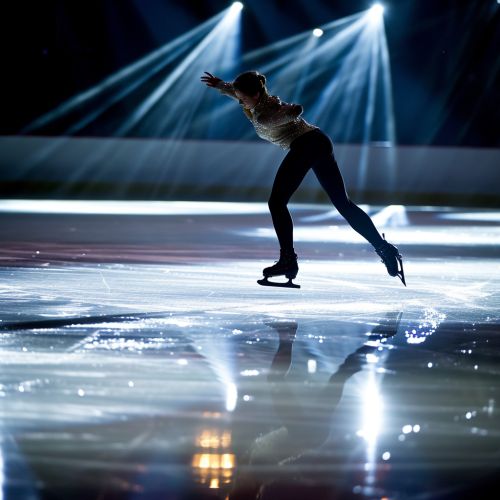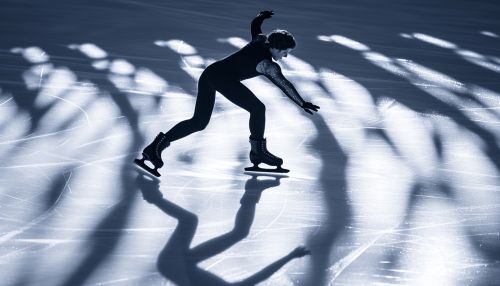Figure skating
Overview
Figure skating is a sport and activity in which individuals, duos, or groups perform on figure skates on ice. It was the first winter sport to be included in the Olympic Games, when it was first contested at the 1908 Summer Olympics. The four Olympic disciplines are men's singles, ladies' singles, pair skating, and ice dance. Non-Olympic disciplines include synchronized skating, Theater on Ice, and four skating. From novice through senior-level competition, skaters generally perform two programs (short and free skating) which, depending on the discipline, may include spins, jumps, moves in the field, lifts, throw jumps, death spirals, and other elements or moves.


History
The precise origins of figure skating are unknown, but it is generally believed that the sport originated in northern Europe, and was practiced as a leisure activity by the elite on frozen canals during the winter months. The first known skating club, the Edinburgh Skating Club, was formed in Scotland in 1742. The sport gained popularity throughout the 19th century, with the creation of the first steel skate blade allowing for more complex maneuvers and turns.
Technical elements
Figure skating involves a variety of technical elements, each with its own set of rules and scoring system. These elements include jumps, spins, step sequences, and lifts in pair skating and ice dance.
Jumps
Jumps are one of the most recognized elements of figure skating. They involve the skater leaping into the air and rotating rapidly to land after completing one or more rotations. There are six types of jumps currently allowed in figure skating competitions: the Axel, loop, flip, Lutz, toe loop, and Salchow.
Spins
Spins are a required element in all four Olympic disciplines. The three basic types of spins are the upright spin, the sit spin, and the camel spin. Each of these spins requires the skater to maintain a specific position while spinning on the ice.
Step sequences
Step sequences involve a combination of turns, steps, hops, and edge changes. These sequences are often used to transition between elements, and to demonstrate the skater's control and edge quality.
Lifts
Lifts are a required element in pair skating and ice dance. They involve one skater (the man in a mixed-sex pair) lifting his partner above his head while rotating. Lifts are categorized by the hold at the moment the lady is lifted off the ice.
Scoring
Figure skating competitions are judged on a points system, with skaters awarded points for the technical difficulty and execution of their elements, as well as for program components such as skating skills, transitions, performance, composition, and interpretation of the music.
Training and injuries
Training for figure skating can be a rigorous and demanding process. Skaters often begin training at a young age, and must balance their training schedule with their academic commitments. Injuries are common in figure skating, with skaters at risk of a range of injuries from falls, overuse, or the high-impact nature of the jumps.
In popular culture
Figure skating has been depicted in various forms of media, including films, television shows, and books. It has also been the subject of numerous scandals and controversies, which have often received widespread media attention.
